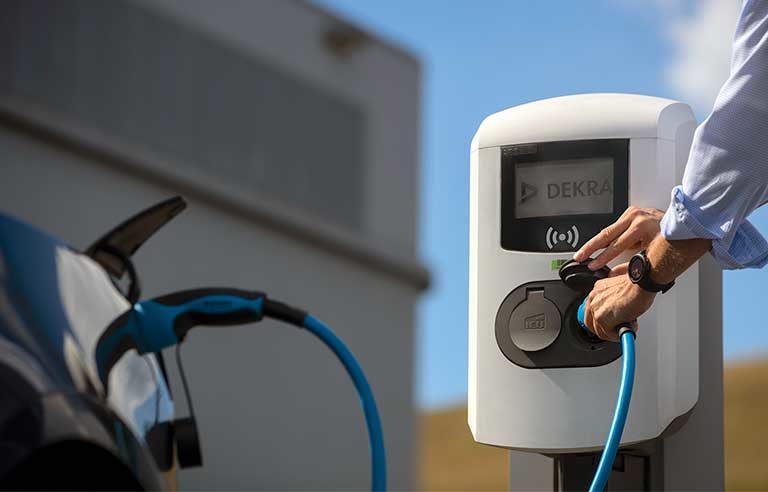7 safety essentials for an electric fleet
What considerations should be taken into account when adding electric vehicles to a fleet?

Responding are Fernando Rodriquez, vice president of product testing, and Christian Ruecker, vice president of mobility, DEKRA, Atlanta.
Electric vehicles are supercharging the future of mobility, including fleets.
Adding EVs makes fleets more sustainable by reducing emissions and saving on fuel and maintenance costs. But there’s more to it than simply swapping EVs for traditional vehicles. To achieve the return on investment expected from EVs’ lower total cost of ownership and ensure the safety of your EV fleet, you’ll first want to take these essential actions:
Train purchasing and quality, health, safety and environment departments: Electrifying fleets requires adoption of new requirements for vendors and providers throughout the EV ecosystem to ensure compliance with industry and corporate standards beyond regulatory requirements. This includes considering the safety, performance and security of vehicles, charging stations, charging management systems and apps – all ecosystem elements.
Address cybersecurity: Electrifying fleets introduces new cybersecurity risks. EV manufacturers in many countries are adopting new requirements to ensure cybersecurity from design through deployment – even while EVs are on the road. The EV charging infrastructure itself poses another threat. Your plan should include requirements for charging stations and management operators to mitigate cybersecurity risks, and regular inspections should confirm cybersecurity is being maintained at each point.
Line up technicians and repair shops: EVs have unique components and systems, such as the high-voltage battery, that require specialized knowledge and capabilities to handle maintenance and repairs. Ensuring your in-house technicians are EV-ready and having a properly vetted external service network is critical to operate safely and optimize total cost of ownership.
Ready the charging infrastructure: An interoperable charging network that accommodates different EV makes and models will minimize downtime and ensure all vehicles are charged and ready for use when needed. When choosing a charging network, consider ease of use, compatibility with your fleet and scalability to accommodate future growth.
Establish an inspection and maintenance schedule: Regular maintenance checks, such as monitoring the health of high-voltage batteries and cooling systems, help extend vehicle life and prevent unexpected downtime while also ensuring safe, optimal performance. Maintenance plans should include regular inspections of the safety, functional performance and reliability of the EV fleet, its ecosystem components, and the charging infrastructure.
Consider ADAS and connected driving functionality: Advanced driver-assistance systems and mobile technologies can considerably increase driver safety. Many also provide added functionality to optimize fleet management, increase productivity and drive increased revenue while lowering operating costs. To keep these systems functioning properly, technicians and repair shops need to be ready to diagnose and calibrate after repair and maintenance.
Train drivers: Driving an EV is different – accelerating, braking, one-pedal driving, managing energy consumption and recharging are just some of the differences drivers will need to get used to. Some drivers may be hesitant or question the need for EVs. For driver confidence, for safety and to optimize vehicle performance, plan to educate drivers on both the “whys” of EVs and the “hows” of operating them effectively.
Set the wheels in motion! Proper planning, training and ongoing maintenance will help you effectively manage your EVs and achieve the long-term cost savings and sustainability benefits that make them the future of fleets.
Editor's note: This article represents the independent views of the author and should not be considered a National Safety Council endorsement.
Post a comment to this article
Safety+Health welcomes comments that promote respectful dialogue. Please stay on topic. Comments that contain personal attacks, profanity or abusive language – or those aggressively promoting products or services – will be removed. We reserve the right to determine which comments violate our comment policy. (Anonymous comments are welcome; merely skip the “name” field in the comment box. An email address is required but will not be included with your comment.)

